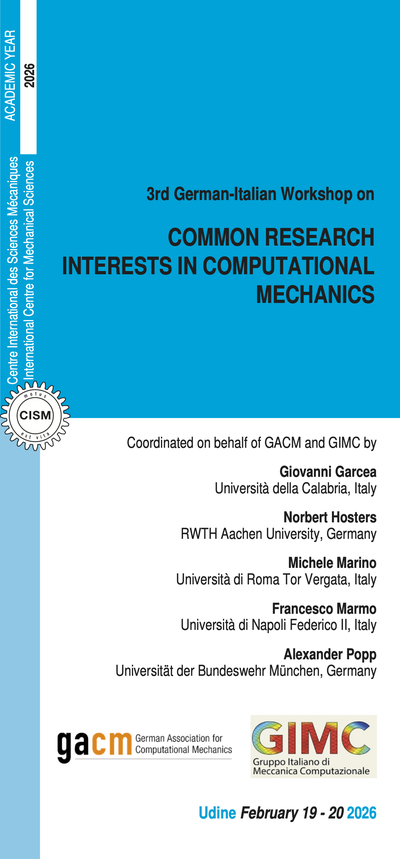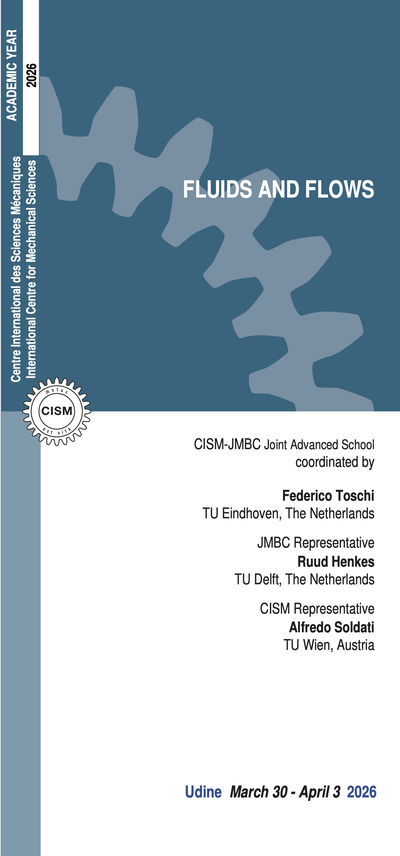Particulate flows are present in many natural and industrial processes. Transport of sediment in rivers and estuaries, convection of pollutants in the atmosphere, bioconvection of zooplankton, gravity and turbidity currents near coastal shore, pyroclastic flows from volcanic eruptions are a few examples that can be encountered in natural phenomena. In industry, processes involving flows of particles are numerous: among others, fluidized bed reactors, the treatment of waste materials in clarifiers, food processing, and ink technologies. In all the above-mentioned instances, proper understanding and accurate modelling of such complex flows are crucial aspects from scientific and engineering perspectives, as they directly impact the environment we live in. The understanding of such flows is a daunting task for several reasons. The most straightforward is the very large number of particles one needs to account for. Another equally significant difficulty arises from the subtle coupling between particle-particle and particle-fluid interactions: particles have an effect on the fluid flow (and sometimes even drive it) by exerting stresses on the fluid around them, and in turn the fluid flow modifies the motion of the suspended particles. This two-way coupling often makes attempts at comprehending such flows highly difficult, other than in very simplified settings. Particulate flows have been examined in the past in a wide variety of situations. A very large number of studies have focused on highly viscous flows in which inertial forces can be neglected. This low-Reynolds-number limit is a valid approximation in small-scale systems or very slow flows, and is often justified when the size of the particles involved in the process is small. In many practical applications, however, fluid inertia cannot be neglected owing the large system sizes, even when the suspended particles are small. In some cases, it is of fundamental importance such as in pyroclastic flows or in fluidized bed reactors where the flows are highly turbulent in spite of the microscopic size of the particles involved. Several studies have focused on the Lagrangian properties of particles in turbulence (e.g. Lagrangian acceleration) to gain further insight on the relevant forces acting on isolated particles. Preferential concentration and clustering effect of inertial particles in a turbulent flow have been also examined in many recent works. However, collective effects in turbulent particle laden flows have been not thoroughly examined and there is a compelling need to provide a robust body of knowledge in this active field of research. The scope of the course is therefore to provide a state-of-the-art and accessible survey of numerical and experimental approaches as well as modelling tools for the analysis of collective dynamics of particles in flows. The general approach will be made specific through the most tractable analytically case of low-Reynolds flows but will go beyond viscous flows and will tackle inertial and turbulent flows. The course will also cover the two basic avenues for addressing particulate flows, one being discrete particle simulations and the second being continuum two-phase modelling. In the later, the influence of particles is captured through constitutive relations often resulting from simulations or experiments. The most common discrete methods for the description of particle-laden flows, both in the Stokes regime and in the inertial and turbulent regimes, will be presented and discussed. Among the topics to be included are finite-size particles, deformable particles, and particles of different shapes, in particular rod-like particles or fibres whose interest lies in part in the availability of methods for slender bodies as well as in their importance in industrial applications, such as the fabrication of fibre-reinforced materials and of pulp and paper. The course delivers a comprehensive overview of particulate flows, from low Reynolds numbers to full turbulent flows, and hence will be particularly attractive to graduate students, PhD candidates, young researchers and faculty members in applied physics and chemical-mechanical engineering. The advanced topics and the presentation of current progress in this very active field will also be of considerable interest to many senior researchers, as well as industrial practitioners having a strong interest in understanding the multi-scale complex behavior of such multiphase flows. Workshop sessions on Tuesday will be chaired by Cristian Marchioli (University of Udine). The course will be organized under the auspices of ERCOFTAC and with the supoport of COST, through Action FP1005 "Fiber suspension flow modeling" and ANR CoDSPiT "Collective dynamics of settling particles in turbulence".
A Physical Introduction to Suspension Dynamics (Cambridge Texts in Applied Mathematics) by Elisabeth Guazzelli, Jeffrey F. Morris and Sylvie Pic (Jan 23, 2012). R. Monchaux, M. Bourgoin, A. Cartellier. "Analyzing preferential concentration and clustering of inertial particles in turbulence," Int. J. Multiphase Flow 40, 1-18 (2012). Joontaek Park, Bloen Metzger, Elisabeth Guazzelli, and Jason E. Butler. "A cloud of rigid rods sedimenting in a viscous fluid," J. Fluid Mech., 648, 351-362, 2010. Kyongmin Yeo, and Martin R. Maxey. "Simulation of concentrated suspensions using the force coupling method," J. COMPUT. PHYS., 229, 2401-2421, 2010. Elisabeth Guazzelli, and John Hinch. "Fluctuations and Instability in Sedimentation," Annu. Rev. Fluid Mech., 43, 97-116, 2011. H. Homann and J. Bec (2010): Finite-size effects in the dynamics of neutrally buoyant particles in turbulent flow. J. Fluid Mech., 651:81-91. M. Jenny, J. Dusek and G. Bouchet. "Instabilities and transition of a sphere falling or ascending freely in a Newtonian fluid," J. Fluid Mech., 508, 201-239, 2004.
Gilles Bouchet (Aix-Marseille University, CNRS, France)
4 Lectures on: General introduction to scope and content of the course. Transition scenario in the wake of spherical and anisotropic particles (spheroids, discs, cylinders, fibres). Transition scenario of the solid-fluid systems (free falling or rising bodies interacting with the ambient fluid via hydrodynamic forces).Mickael Bourgoin (None)
5 Lectures on: Collective effects of inertial particles in turbulent flows. Theoretical framework and phenomenology of particle-turbulence interactions. Experimental and numerical observations of preferential concentration. Analysis tools to diagnose preferential concentration and characterize clusters geometry. Open questions and ongoing researches.Jason Butler (None)
5 Lectures on: Collective Stokesian dynamics of spherical particles and slender bodies suspended within viscous fluids. Governing equations and applications to sedimentation and shear flows.John Hinch (None)
6 Lectures on: Small particles in highly viscous fluid; sedimentation and rheology. Low-Reynolds-number limit at the level of individual particles, small inertial correction. Sedimentation of one, few or many particles. Numerical issues. Rheology of a suspension: homogenization, rotations, deformations and interactions of particles.Holger Homann (None)
5 Lectures on: From point to finite-size particles: different physics, different numerical modeling. Details on the method of 'fictitious domains'. Finite-size effects in the dynamics of individual particles. Collective effects of finite-size particles.Martin Maxey (None)
6 Lectures on: Numerical methods for modeling and simulation of rigid particles in fluid flow. Particle tracking equations with one-way or two-way coupling and their application. Approximate force coupling method (FCM) at low and finite Reynolds numbers. Immersed boundary methods, extensions to non-spherical particles and examples of applications in dispersed multiphase flows.Applicants must apply at least one month before the beginning of the course. Application forms should be sent on-line through our web site: http://www.cism.it or by post. A message of confirmation will be sent to accepted participants. If you need assistance for registration please contact our secretariat. The 700,00 Euro registration fee includes a complimentary bag, four fixed menu buffet lunches (Friday subject to numbers), hot beverages, downloadable lecture notes and wi-fi internet access.





